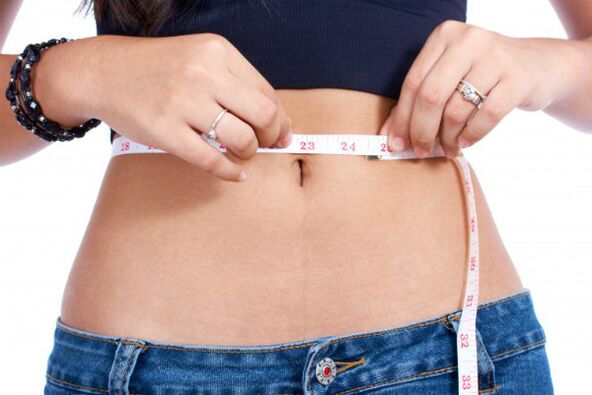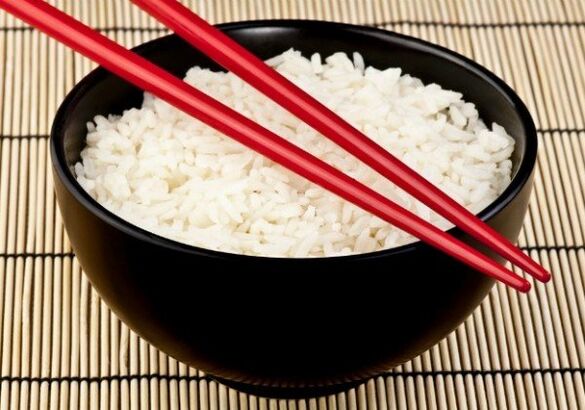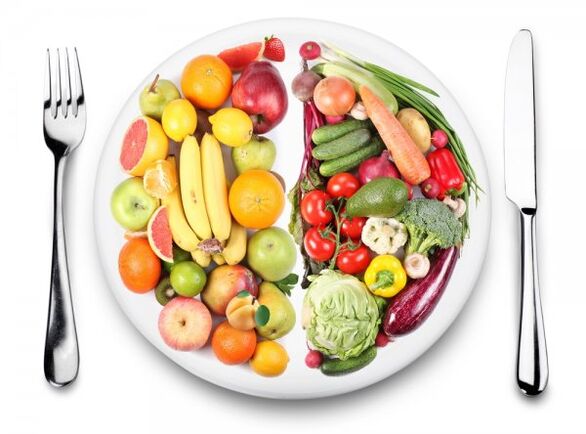The rapid popularity of the Japanese 7-day diet without salt for weight loss is attracting the attention of a growing number of modern women. The proposed article on a similar nutritional principle will help develop a menu and view amazing results. In the Land of the Rising Sun it is rare to see a woman with curvy shapes. What is the secret of Japanese women? Climatic conditions, genetic factor, or secret hidden in the peculiarities of Japanese cuisine? And, most importantly, can European women achieve such a result? Why not. You just have to use the developed Japanese diet for 7 days. But before you dive into "oriental weight loss", you should get to know it better and find out what are the principles of such a diet, how are they applicable in our country, what are the advantages, disadvantages and contraindications for this type of lossweight.

Basic principles of "Japanese weight loss"
The reason for the popularity of the Japanese diet for weight loss is the fact that the Japanese are considered the healthiest nation on the planet. This is stubbornly evidenced by the fact that in this country the largest percentage of centenarians, overweight and obese are foreign to the population. Moreover, according to statistics, the Japanese rarely suffer from diseases related to the cardiovascular system, and their intellectual potential has long been the envy of the whole world. In addition, the Japanese lead an active lifestyle, go for walks, ride a bike. Let us consider the basic principles of "Japanese weight loss" and understand the mechanism of their action.
All this data interested doctors and nutritionists and encouraged them to study the Japanese food system. Analyzing the diet using this method, nutritionists agreed that the duration of the Japanese diet should be 14 days to get results. At the same time, the menu is calculated for one week, provided that the diet can be resumed from the eighth day. Thus, the basic principles of the Japanese diet for weight loss for 7 days were derived.

- For effective weight loss, eat food in small portions. The Japanese diet is results-focused, and is therefore anti-overeating. This is why it is customary in Japan to eat with special sticks, they allow you to slowly absorb food without rushing. And, as you know, the slower a person eats, the faster the feeling of hunger passes.
- During the Japanese diet without salt, the use of sugar, salt, spices of any kind is prohibited.
- Sweets and baked goods should be excluded from the diet. Instead of bread, you should eat rice. Food is the main food of the Japanese, much healthier than bread products, which contain a lot of sugar and starch.
- It is necessary to take care of the quality of food and preserve the useful properties of the products when cooking. In Japan, "baked" food is not eaten, and all foods are cooked gently. You should also get rid of "heavy" fatty sauces, replace them with soup.
- From beverages, preference should be given to green tea and pure water, the volume of which should be at least one and a half liters per day.

How does the Japanese diet work?
Despite the fact that the Japanese diet for 7 days is considered by many to be unsafe, rigid and ineffective, its popularity is constantly growing. This is due to the fact that there are more and more people who want to lose those extra pounds quickly in a short time. Let’s look at how the Japanese diet works and what safety principles should be followed. The secret behind the amazing results of the Japanese diet is that people eat foods rich in protein and carbohydrates for seven or fourteen days and skip all fatty foods. Thus, the daily caloric intake, which is necessary for normal life, is reduced.
The fact is that, sitting on a diet, a person tries to significantly reduce the amount of food consumed. However, the habit of eating too much and satisfactorily negatively affects the sharp change in diet, the body experiences stress, which does not allow the body to protect itself from the constant feeling of hunger. The Japanese diet for 7 days guarantees a consistent result, as the dishes included in the allowable list are quite satisfactory, as they are rich in protein and protein. A small portion is enough to satisfy hunger and replenish strength, but at the same time losing weight will not eat extra calories.
Japanese diet menu for 7 days: what and how can you eat?
For the Japanese diet to be balanced, it is important to include the right foods in your diet. Important components of the Japanese diet are seafood, rice, vegetables and fruits (except bananas and grapes), boiled meat, eggs, olive oil, fermented milk and soy products. The Japanese diet menu for 7 days in its rough version is presented on this page further. It shows how and what you can eat in principle, and what you should discard.
So that the result from the diet does not delay, you need to eat in small portions, drink enough water to remove toxins from the body.
For convenience, it is recommended to compile a weekly menu of the Japanese diet and strictly adhere to such a nutritional system. Experienced weight loss advises, before you start the weight loss process, to buy everything you need to prepare food, so that later you do not have to go to the store and be tempted by prohibited products. An example 7 day menu for the Japanese diet is shown below.
The Japanese diet without salt is very strict and complex. To make patience easier, it is necessary to go impartially towards the intended goal. Every morning on an empty stomach, you should drink a glass of water with a little lemon juice (about a tablespoon per glass). It promotes the elimination of toxins and toxins from the body, improves metabolic processes.

The first day
- Breakfast: green tea or coffee, drinks should be drunk without added sugar and / or milk;
- Lunch: 2 boiled chicken eggs, salad with cabbage or cabbage without meat boiled in a tomato, a glass of tomato juice without added salt;
- Dinner: 200 grams of boiled or stewed fish.
The second day
- Breakfast: a small piece of black bread or rye bread, you can get whole wheat bread, coffee without sugar and added milk;
- Lunch: 200 grams of boiled fish, cabbage salad with olive oil, a glass of tomato juice without added salt;
- Dinner: 100 grams of boiled meat and a glass of kefir.
third day
- Breakfast: coffee without sugar and milk, biscuits (2-3 pieces);
- Lunch: vegetables fried in vegetable oil (except potatoes);
- Dinner: 200 grams of boiled meat, cabbage salad, 2 boiled eggs.
The fourth day
- Breakfast: 100 grams of boiled vegetables, sugar-free coffee and milk;
- Lunch: 200 grams of boiled fish, a glass of tomato juice without added salt;
- Dinner: 200 grams of any fruit other than bananas and grapes.
Day 5
- Breakfast: 100 grams of boiled vegetables, sugar-free coffee and milk;
- Lunch: 200 grams of lean boiled meat, a glass of tomato juice without added salt;
- Dinner: 200 grams of any fruit other than bananas and grapes.
Sixth day
- Breakfast: coffee without sugar and milk;
- Lunch: unsalted chicken (300 grams), cabbage salad with vegetable oil, a glass of kefir;
- Dinner: 2 hard-boiled eggs, 200 grams of boiled vegetables (except potatoes).
Seventh day
- Breakfast: green tea;
- Lunch: 200 grams of lean boiled meat;
- Dinner: 200 grams of lean boiled meat, cabbage salad with vegetable oil, a glass of kefir.
By the end of the week, the scales will show a response of 5-7 pounds. If you need to lose more, then you need to go to the second round of the Japanese diet. After that, you should definitely take a break and start returning to this method of treating excess weight no earlier than six months later.

Results, Advantages and Disadvantages of the Japanese Diet
Every advantage and disadvantage must be seen through the prism of achieving a certain goal. The results of the 7-day Japanese diet for weight loss are impressive in the speed of gaining detail by removing excess fluid from the body. As a rule, from 5 to 7 kg of weight is lost per week. The advantages of the Japanese diet include a rapid decline in body weight, the elimination of toxins and toxins from the body, and the improvement of metabolism in the body. Due to weight loss, the work of the joints is normalized, the body feels light. In addition, in terms of financial cost, the Japanese diet is cheap compared to other methods.
The disadvantages of the Japanese diet are its severity and unstable results. The lack of fat and salt in the weekly diet promotes the removal of excess fluid from the body, due to which there is a rapid weight loss. Once these foods are returned to the diet, the weight starts to increase again. To slow down this process, you need to get out of the diet correctly and include forbidden foods in the menu gradually, if there is no way to abandon them altogether.
Avoiding the Japanese diet
So at the end of a week of "fasting" and weight loss, the pounds do not return, you need to get out of the diet correctly. Leaving the Japanese diet should be smooth and gradual. The following rules will help consolidate the result obtained from the Japanese diet for 7 or more days.
- Drastic diet change is not recommended; forbidden or restricted foods should be added gradually, in small portions.
- As the body adapts to the new nutritional conditions, salt and sugar should be introduced gradually, as these products are capable of retaining fluid in the tissues and turning them into fat deposits.
- In the first weeks, dinner should be done as it was during the diet, d. m. th. protein. It is forbidden to eat 2 hours before bedtime.
- The minimum body adjustment period after the Japanese diet is 15 days.
For whom the Japanese diet is contraindicated
No matter how much everyone wants to lose weight, there are a number of contraindications, according to which it is forbidden to go on a Japanese diet, as it is fraught with a deterioration in health. The risk group for which the Japanese diet is contraindicated include:
- pregnant and lactating women;
- children under 18;
- people suffering from diabetes mellitus;
- people with chronic and acute diseases.
The process of losing weight in a Japanese diet will be different for everyone, as each organism has its own distinctive characteristics. To consolidate the result obtained for a long time, after a diet, it is necessary to review the principles of your nutrition, to exclude simple fats and carbohydrates and to limit salt intake. This will help not only to stay in good physical shape, but also to heal the whole body.
















